When people make lists of Prague’s most beautiful buildings, the Prague Congress Centre seldom makes the list. But the 1980s-era structure, built as the Palace of Culture, has some hidden gems of art on the inside and some fair claims to history.
The building, overlooking the Nusle valley, will be open for tours that show some of its usually inaccessible spaces as part of Open House Praha on September 5–6 and then the building will host Czech Design Week on September 10–13. It is easy to find the Prague Congress Centre (Kongresové centrum Praha. KCP), as it sits right next to the Vyšehrad metro stop on the C line.
More cultural events are planned throughout the autumn as part of the Art District Vyšehrad project. The current outreach to the public is to help make up for the lack of large international congresses.
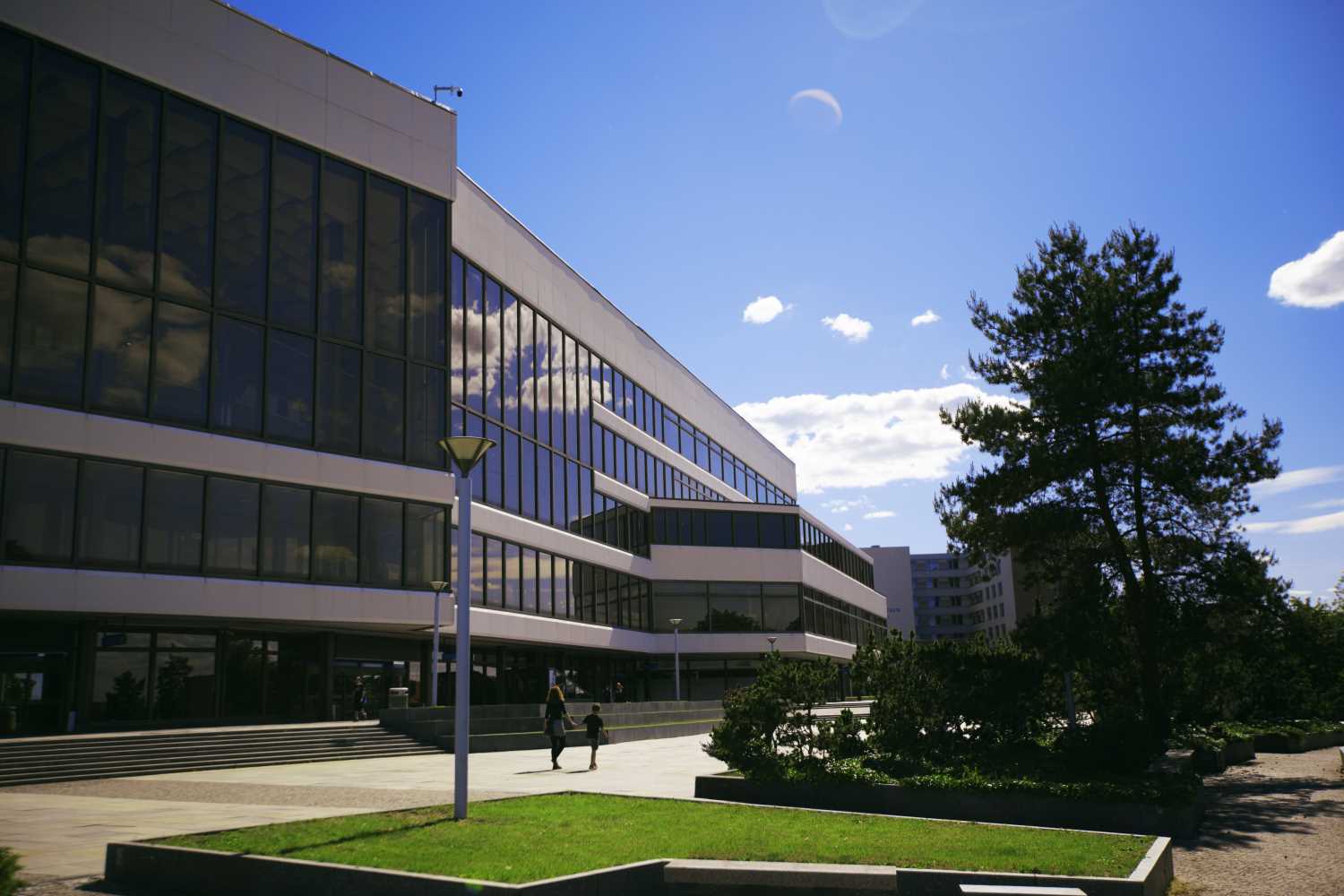
The neo-functionalist building, with its classic 1980s interior, has been used several times in movies and advertisements — including one featuring Arnold Schwarzenegger. The interior was meant as a showcase for Czechoslovak art, and a large amount of it has survived over the years.
US President Barack Obama visited in 2009, and of course it was the center of anti-globalization protests during the International Monetary Fund (IMF) and World Bank summit in 2000. The 2002 NATO summit ans 2009 EU Council presidency were quieter.
The construction of the Palace of Culture began January 1, 1976 and was completed December 31, 1980, with a ceremonial opening April 2, 1981, with Czechoslovak president Gustav Husák in attendance. The architects were Jaroslav Mayer, Vladimír Ustohal, Antonín Vaněk, and Josef Karlík, The latter was an advisor to the Prague Congress Centre until his death in 2019.
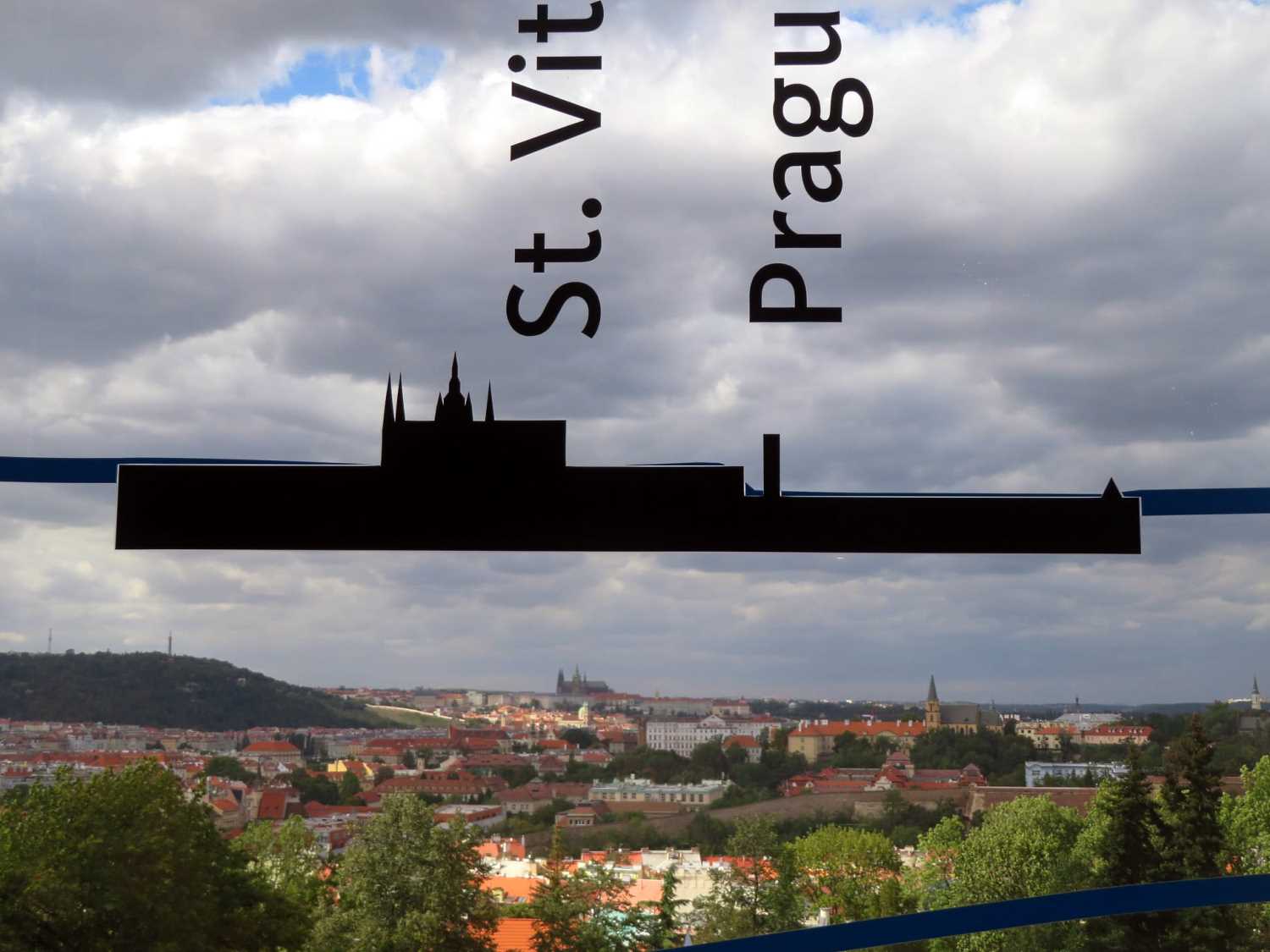
At the time it opened, it was one of the largest buildings of its type in Europe. One of its purposes was to host communist party meetings.
Marketing Specialist

Secondary School Teacher – English & CLIL Subjects

Dutch-Speaking Recruitment Consultant - Earn Big!

Its political roots, though, made it unpopular with the public. The modern institutional look of the building was also seen as a poor fit for an area that is home to Vyšehrad, a fortified complex with over 1,000 years of history.
The lack of affection of the building was made clear in 1991, when the its protection as a cultural monument was removed. It currently is not an official landmark, but it is part of the general protected zone surrounding Prague’s UNESCO World Heritage Site.
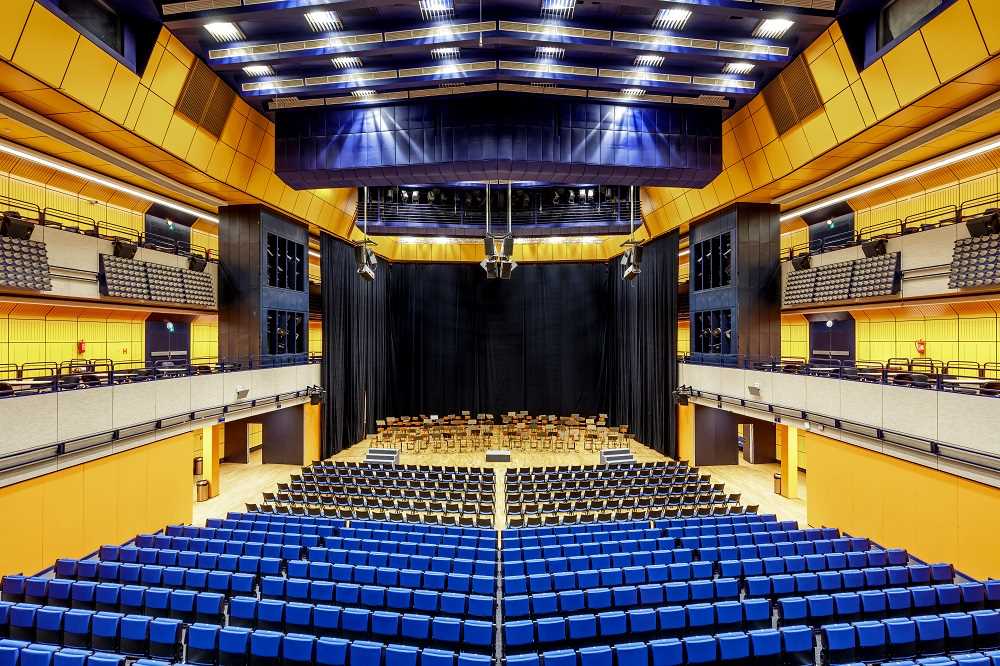
The building was renamed the Prague Congress Center in 1995. It was given a new sense of purpose as a concert and meeting venue. This has caused several renovations and expansions to modernize the interior spaces.
Most people now know the center for its Congress Hall and Forum Hall. Musicians who have held concerts in those rooms include David Bowie, Lou Reed, Johnny Cash, Bruce Springsteen, Ringo Starr, B.B. King, the Beach Boys, and Sting, among many others.
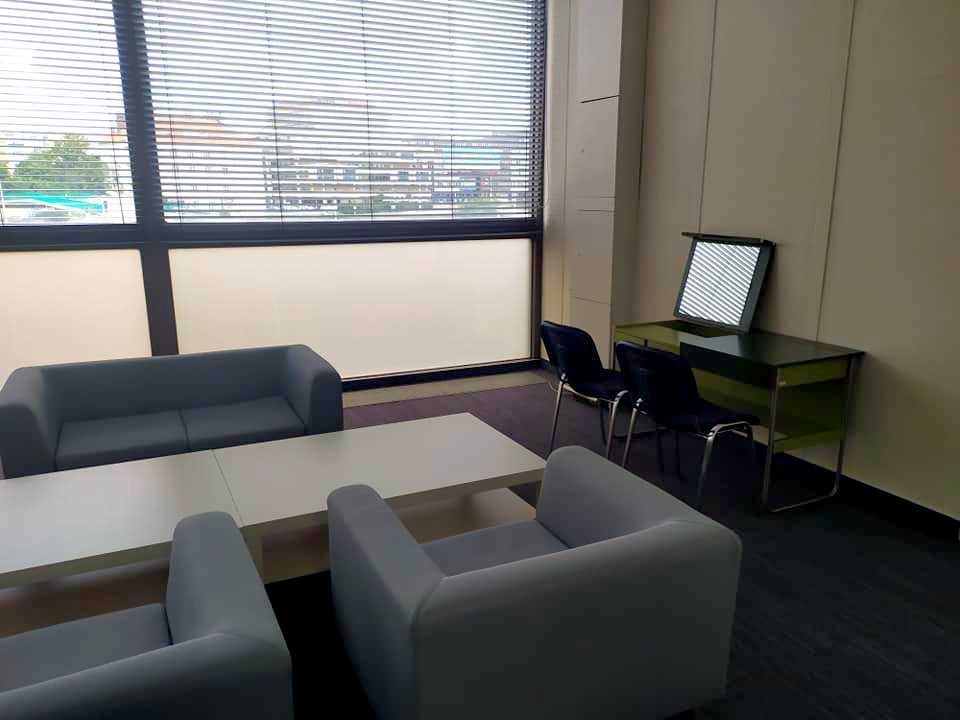
But overall, the building has 70 rooms, many of which are seldom seen by the public. Its large open spaces, long hallways and period 1980s décor has long attracted filmmakers. There is also a digital studio for broadcasting live events.
Recently, parts of the Congress Center appeared in the miniseries Sleepers and film Prague Orgyas Prague’s airport. It can also be spotted in three episodes of Whiskey Cavalier and the series Crossing Lines. Scenes for Borg vs McEnroe and The Omen (2006) were also shot there. One of the earliest films to use the space was the 1983 Czechoslovak film I Enjoy the World with You (S tebou mě baví svět).
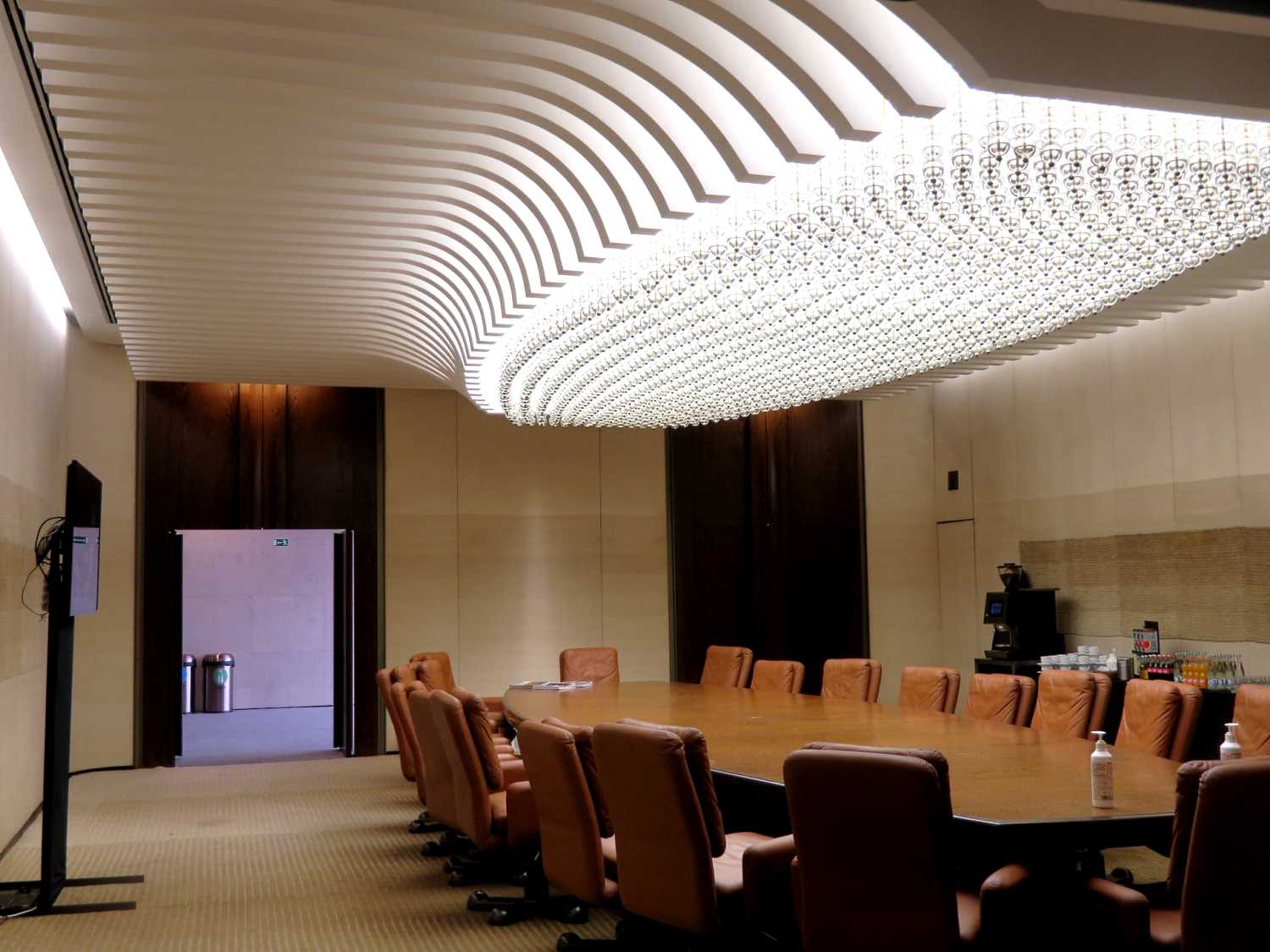
Arnold Schwarzenegger was there for the 2015 advertisement for the videogame Mobile Strike. He appears in a military uniform in a command center. The scene was filmed in South Boardroom 1, also now known as the Schwarzenegger Room.
The sculpted ceiling light by Czech artist František Vízner is featured prominently in the ad. The piece is made of curved glass ribs and hundreds of hollow glass balls. The room’s carpet, wallpaper and tapestry by Josef Müller are a bit hidden by the ad’s special effects.
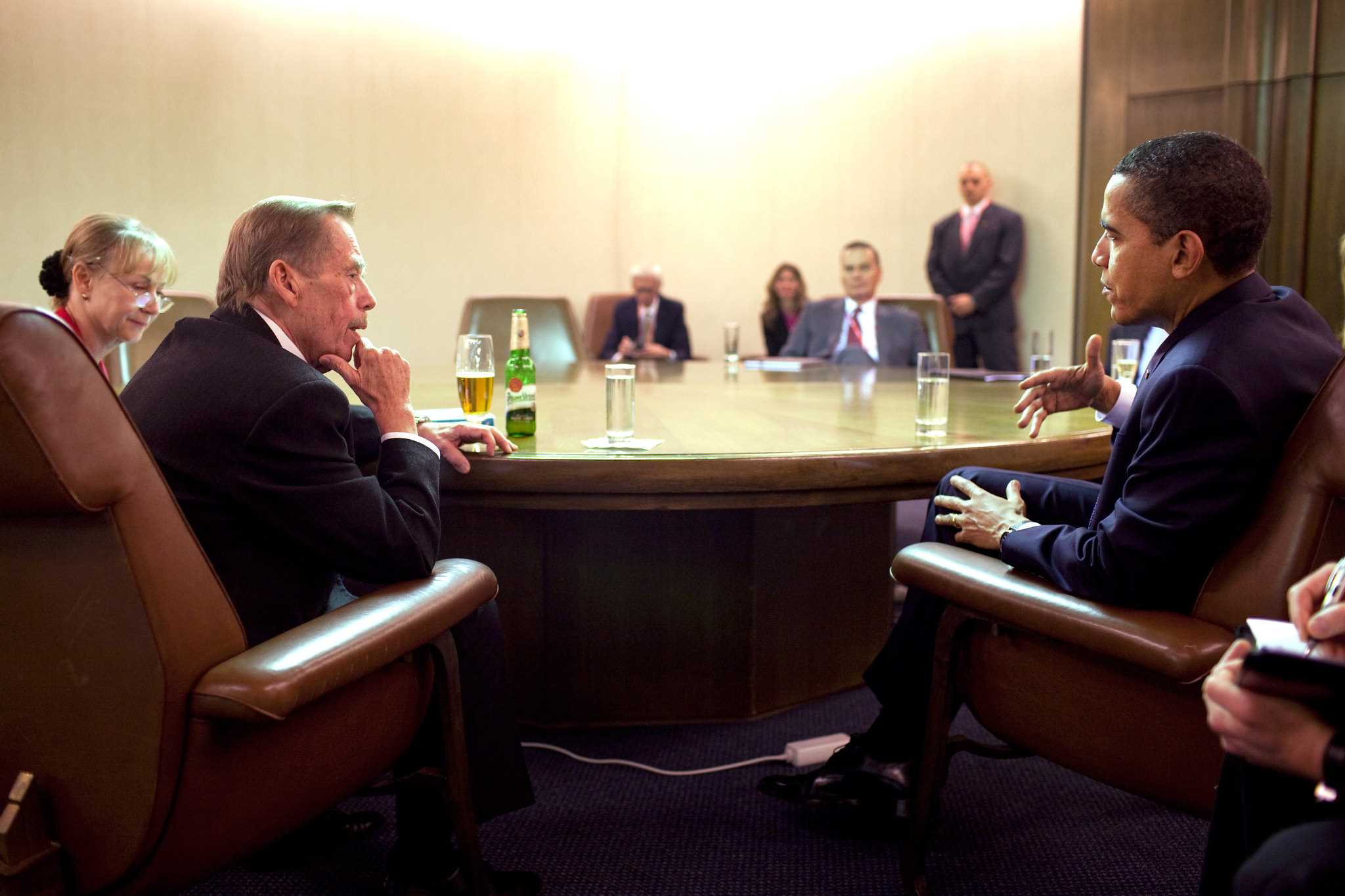
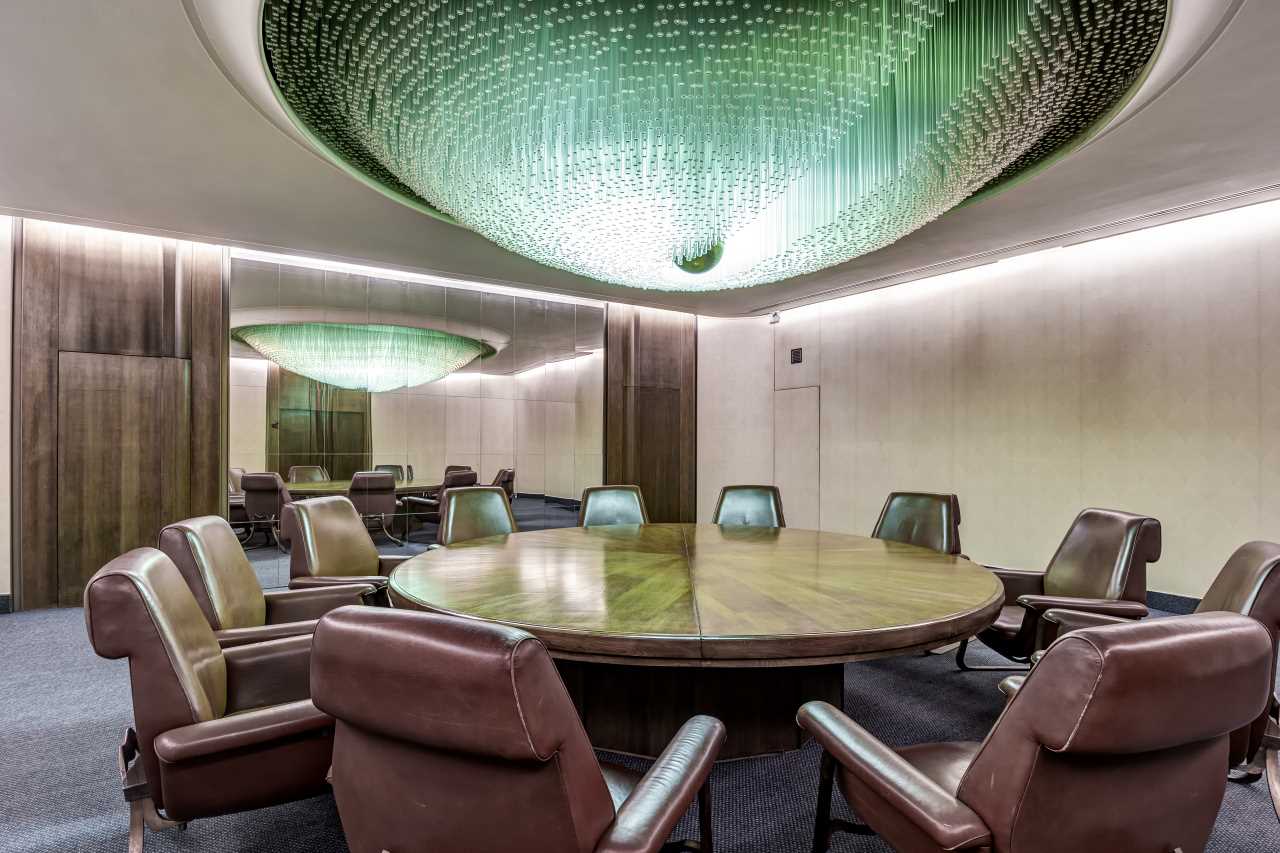
Another room to take its name from a person that used it is the Obama Room, also known as South Boardroom 2. Then-US president Obama in 2009 met there with Havel and others.
The chandelier by Vladimír Procházka is made of hundreds of glass tubes. The round table and leather chairs date to the 1980s.
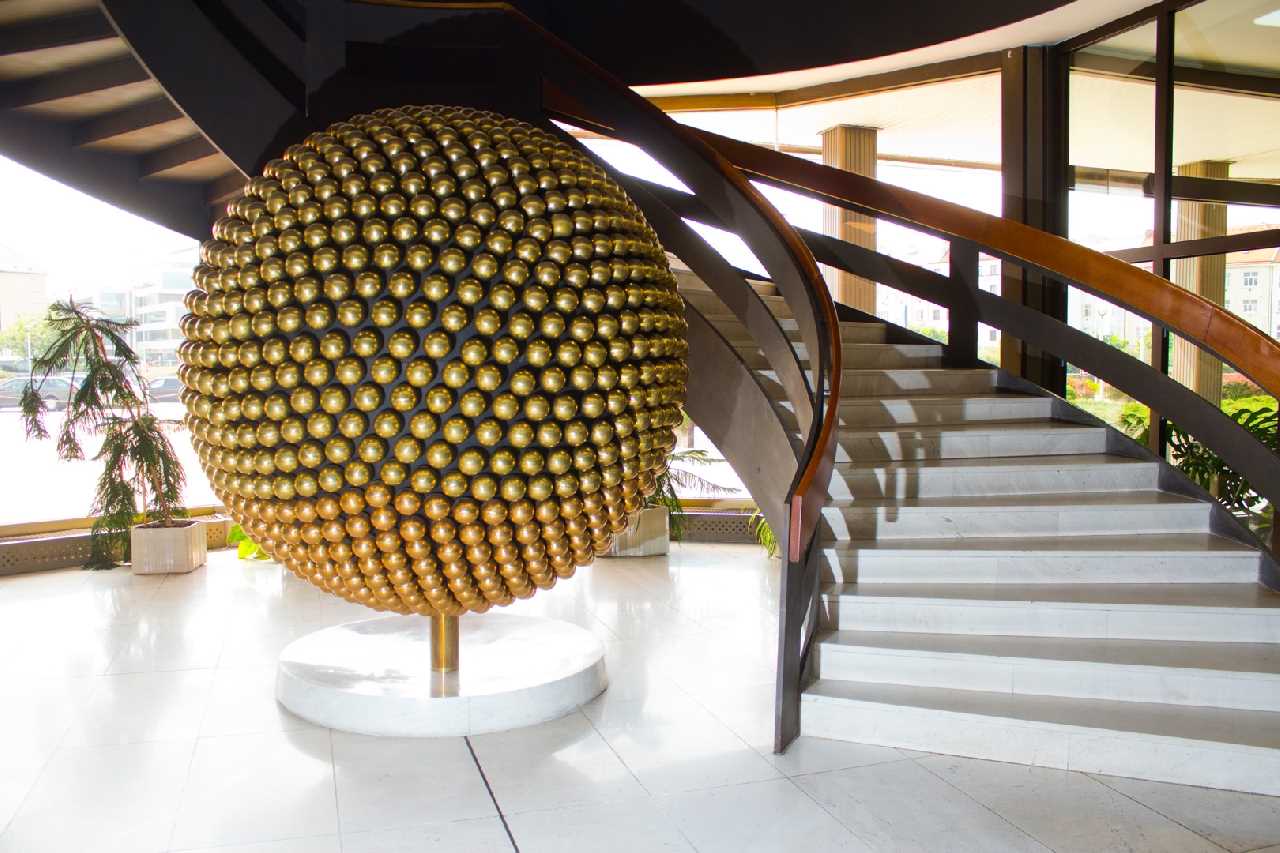
The two rooms are in the same layout area but on different floors. A spiral staircase runs from the ground floor up to the two floors with the board rooms. The staircase has another of the building’s art treasures, Sun by Vladimir Prochazka in collaboration with Petr and Pavel Pataki, A lighting fixture on the ceiling shines down on a metal sphere at ground level.
One of the most prominent works of art is Woman with a Dove, by Stanislav Libenský and Jaroslava Brychtová, perhaps the best-known Czech glass artists. A steel beam supports a large molten glass piece with a woman’s face and details from a bird. It can be found in the Congress Centre’s second floor foyer.
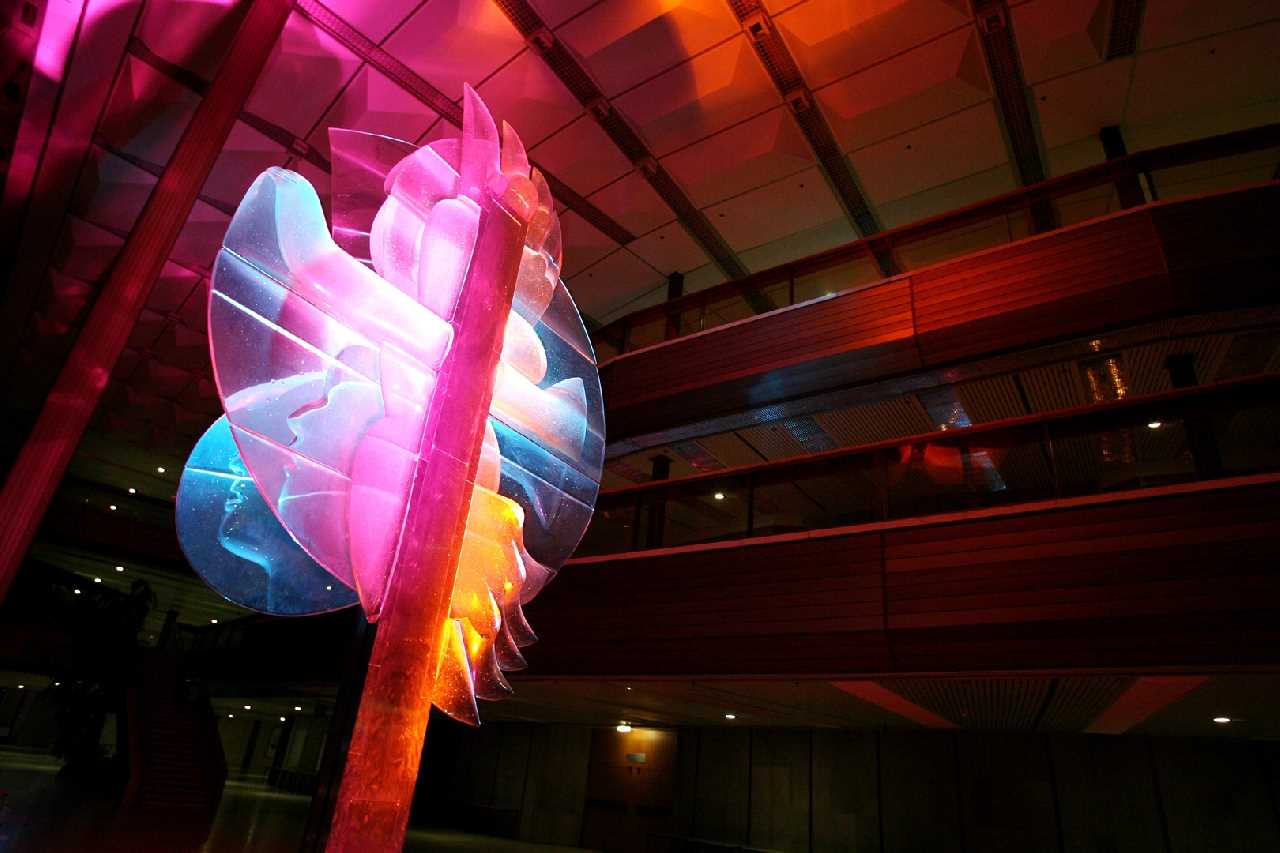
Another notable artwork in the open spaces is a tapestry called Prague Music by Cyril Bouda. It depicts Czech composers Bedřich Smetana, Antonín Dvořák and Leoš Janáček, along with images of some of their famous operas, plus depictions of some famous musicians and Czech landmarks.
One odd feature of the building can only be seen once a year. The north-northwest windows of the second floor foyer offer a panoramic view of the city, including Prague Castle. The sun, though, never shines directly into the foyer except for the sunset during the summer solstice around June 21.
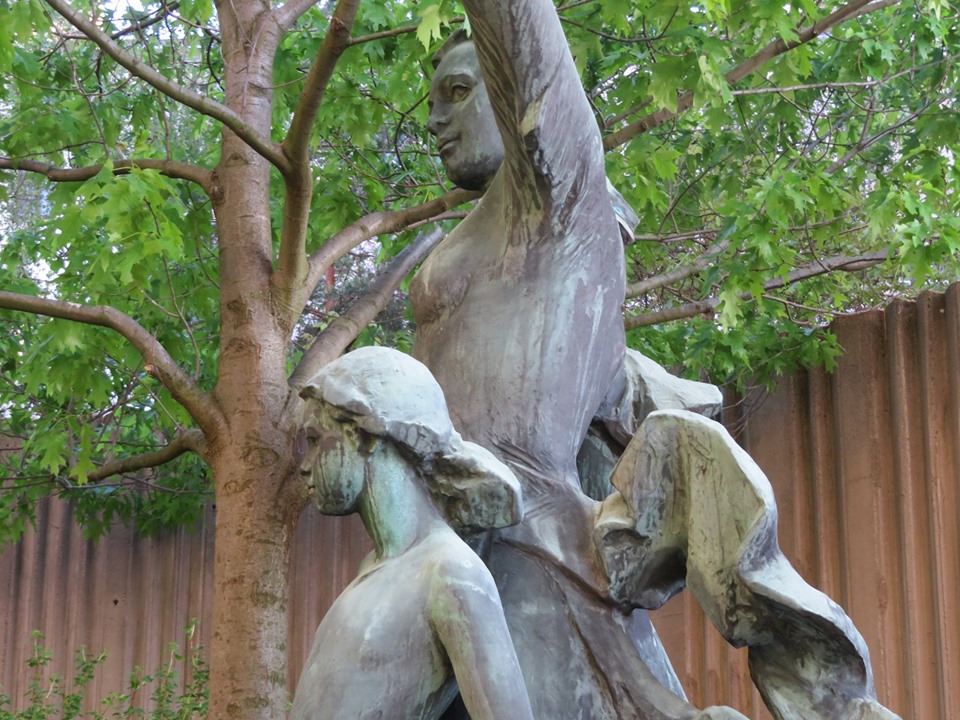
A sculpture outside has not been as lucky as the works inside. Happy Day (Radostný den), a 1981 bronze sculpture by Jan Hana, stood in front of the Congress Center until 1998, when preparations for the International Monetary Fund meeting were underway. People at the time felt the depiction of a mother and daughter holding up a bouquet of flowers was too communist-looking, giving the wrong impression for a capitalist summit.
A crane was hired to move it out of sight. The marble base, now empty, still stands in front of the building. The sculpture itself was moved to a nearby parking lot and dropped off. It stands there to this day, behind a fence.
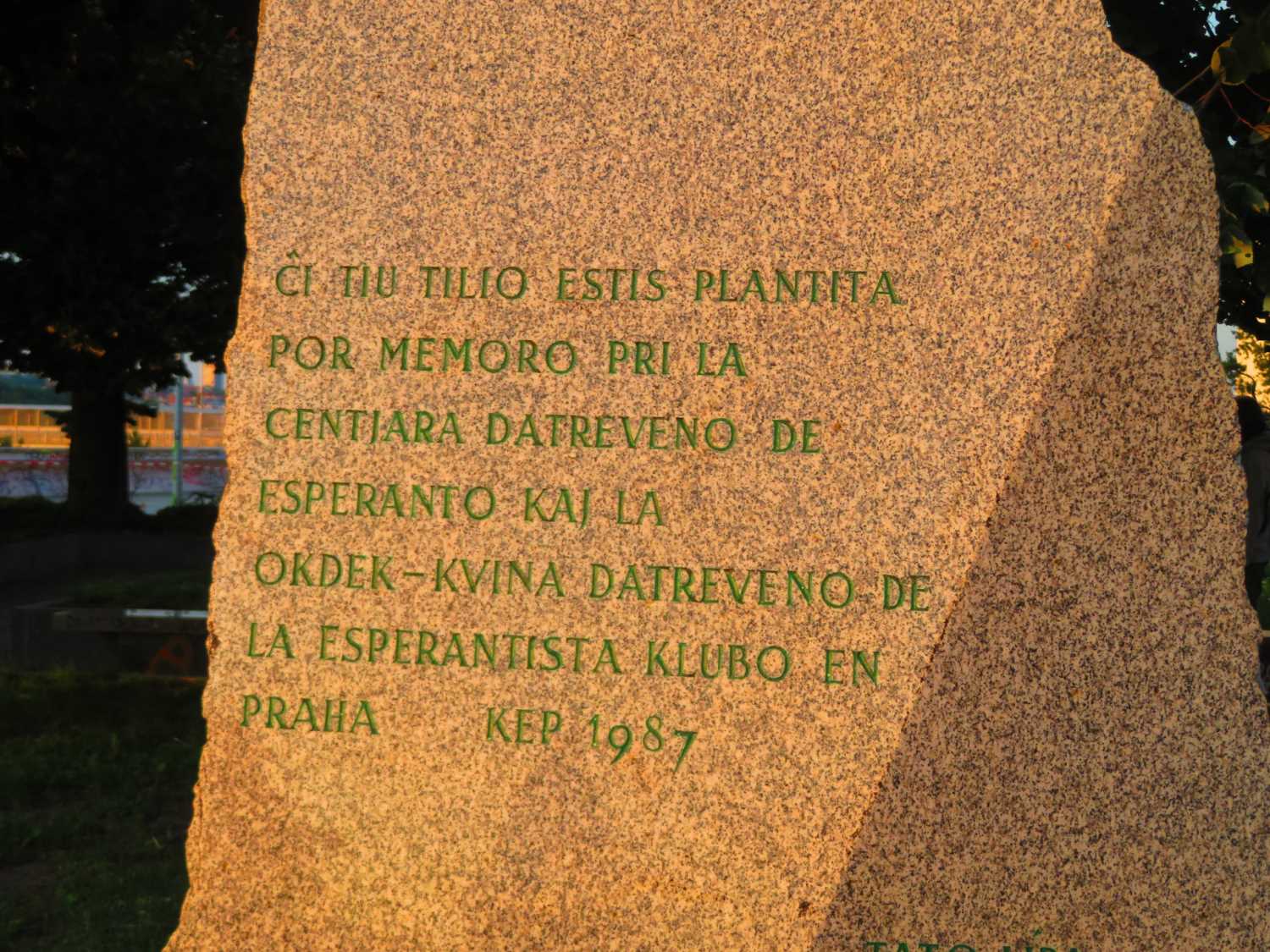
Other monuments outside the Congress Center have remained, including one with text in the invented language Esperanto and a glass pyramid on a metal base.
Further expansion is planned for the future, with a new exhibition hall to be built on the southeast side of the building.












 Reading time: 5 minutes
Reading time: 5 minutes 


 Italian
Italian
 Czech
Czech
 German
German

























